
5 Easy Math Engagement Strategies for the Classroom
The news headlines are daunting. Math scores are down. School districts are scrambling to turn things around. And...
STEMscopes Staff | Published May 01, 2023
Robotics education can prepare children for the jobs of the future, foster essential skills and competencies, and make STEM subjects exciting and engaging while exploring the benefits of introducing robots in the classroom.
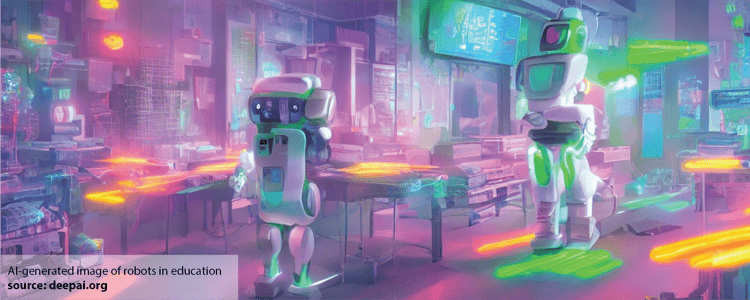
Although the phrase “rise of the robots” may conjure up images of armed battle between humans and vicious androids, when it comes to educational robotics, the story is one of peaceful coexistence.
It’s a story with a happy ending. In recent years, robots have become increasingly popular in classrooms all over the world. Robotics programs and kits have been developed that encourage students to engage with STEM subjects in a fun and interactive way.
Robotics education is becoming more widespread, with many schools using these innovative tools to teach children about science, technology, engineering, and math.
In this article, we will explore the benefits of robotics education and why it is vital to introduce robotics at an early age.
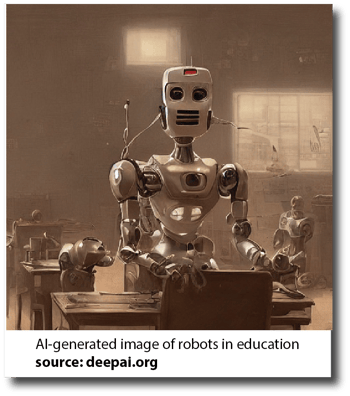 Here, our use of the term educational robotics includes any activity, program, or product that uses classroom robots to engage and inspire students to explore the domains of science, technology, engineering, and math.
Here, our use of the term educational robotics includes any activity, program, or product that uses classroom robots to engage and inspire students to explore the domains of science, technology, engineering, and math.
The aim of educational robotics is to stimulate students’ interest in STEM subjects, improve their problem-solving skills, and enhance their creativity.
The popularity of educational robots has been steadily increasing over the past decade. The market for classroom robots is projected to reach $1.7 billion by 2023 (MarketsandMarkets, 2018).
Robotics kits for teens and other age groups are being used in schools worldwide to supplement traditional science and math curricula. Educational robots are designed to be fun and engaging, which helps to keep students interested in learning.
Some popular classroom robots include LEGO Mindstorms, VEX Robotics, and Ozobot.
As Artificial Intelligence (AI) makes robots easier to use, they become a more attractive option for many industries.
This increased ease of implementation, combined with a shrinking workforce, means that the field of robotics will expand exponentially in the coming years.
It is, therefore, important that students are prepared for the jobs of the future. Robotics education provides students with opportunities to develop proficiency in programming, engineering, and automation, as well as several other traits employers are looking for, no matter the industry.
Among the skills and competencies fostered by robotics education are; teamwork and collaboration, creativity, critical problem-solving, communication skills, ability to self-assess, perseverance, and adaptability.
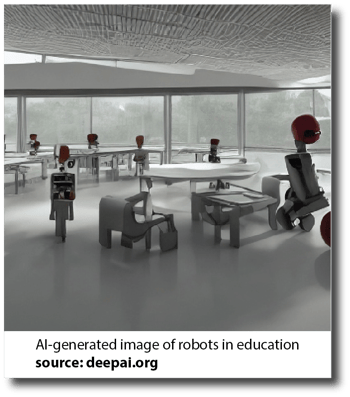 The benefits of incorporating robotics education into the classroom go beyond preparing students for future jobs.
The benefits of incorporating robotics education into the classroom go beyond preparing students for future jobs.
Robotics education brings STEM to life for kids. Many students don’t find STEM subjects to be terribly inspiring.
As a result, they aren’t motivated to put in the effort needed to make sense of challenging content.
Robotics is a pathway for many students to topics, skills, classes, and even careers they might not have otherwise considered, believing these were too challenging, not for them, or just not cool.
Robots make STEM cool and can alter the culture of a classroom or an entire school.
For inspiring stories in this vein, let me suggest the book The New Cool (Bascomb, 2011) or the 2014 documentary Underwater Dreams.
Introducing robotics education at an early age has several benefits. First, it takes advantage of the inherent wonder little ones have about the world around them to spark an interest in STEM subjects.
Children are naturally curious and love to explore. Robotics education harnesses this natural curiosity and helps children to develop a passion for science, technology, engineering, and math.
Second, robotics education improves children's problem-solving skills. Robotics requires students to think critically and creatively to solve problems.
These skills are essential for success in any field and, when cultivated early on, significantly contribute to future academic success.
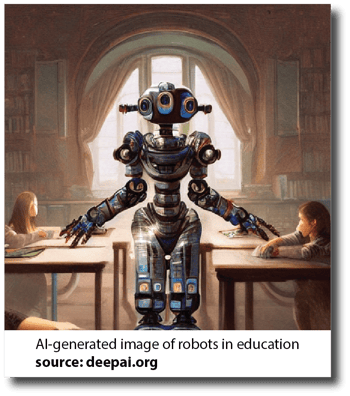 Finally, introducing robotics at an early age helps prepare children for future jobs (MarketsandMarkets, 2018).
Finally, introducing robotics at an early age helps prepare children for future jobs (MarketsandMarkets, 2018).
The discussion of robots and jobs often focuses on the number of jobs humans will lose to robots, and, yes, the number is staggering.
The most often quoted figure is 85 million jobs. The flip side of this grim statistic is the number of new jobs created as robots take over difficult, dangerous, and menial tasks.
According to an article in the Harvard Business Review, what they characterize as a shift in the job market could result in 97 million new jobs needed in fields and positions we’ve never seen before.
The uses of robots and the inevitability of their job takeover can seem alarming. Still, the advantages of robotics and robot education should not be overlooked as it offers preparation for this shift in society and the job market.
The preceding discussion explained the how and why of educational robotics in terms of its most common understanding, that is, kids building and programming robots to learn about robotics or the STEM domains.
Robots, however, have a variety of uses in educational settings, some of which might surprise you.
Kaspar the Social Robot
A robot developed in the UK with the name Kaspar (Kinesics and Synchronization in Personal Assistant Robotics) is a child-sized android (a robot with a human appearance) designed to be a social companion to improve the communication and social skills of children with autism and other communication difficulties.
Robot Student Surrogates 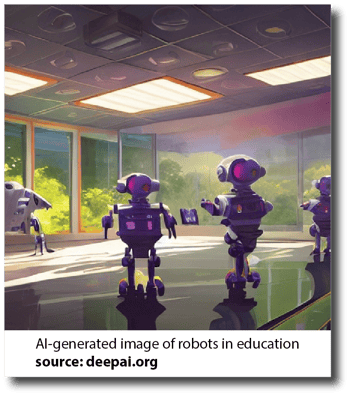 These robots allow chronically ill students, who could not attend school otherwise, to have telepresence in the classroom.
These robots allow chronically ill students, who could not attend school otherwise, to have telepresence in the classroom.
These Internet-enabled robots move about on wheels and include a camera that sends a live feed to the homebound students, as well as a screen showing the user’s face at the top of a vertical “body.”
From home, the student controls the device with a laptop and can see and hear everything in the classroom.
The student can interact with friends and the teacher and “raise their hand” via flashing lights to ask or answer questions. These robots can even take field trips.
Supporting Students with Cognitive Disabilities
Robots have also proved useful in special education, supporting students with cognitive disabilities by providing individualized instruction, social and emotional learning, and communication development, among other areas.
There is also robot-assisted therapy for children with intellectual disabilities. This therapy provides potential benefits by using robots for social skills training, emotional regulation, and cognitive development.
Robot Patients
Robots are also being used in higher education to provide medical students with simulated real-world experiences.
These robots can mimic human patients with various medical conditions, allowing students to practice their diagnostic and treatment skills in a safe and controlled environment.
In addition to training medical students, robots are also being utilized in the education of psychologists.
For example, one study found that a robot could effectively simulate the behavior of a child with autism, allowing trainee psychologists to practice their interaction skills in a controlled environment (Cabibihan et al., 2013).
Another study explored the use of robots to train clinical psychology graduate students in the assessment and treatment of mental health disorders, finding that the use of robots provided a safe and engaging learning experience (Bucci et al., 2020).
It seems inevitable that robots will play an increasingly important role in education. With technological advances, it’s easy to imagine exciting new possibilities for how robots can enhance learning.
Data collected from student work can be analyzed and processed by AI to generate personalized learning plans. Robot surrogates can provide a virtual classroom experience for students who must attend remotely.
Robot teacher aides can take over the more mundane tasks such as taking attendance and grading, freeing teachers to focus on more important work better suited to their training and expertise.
It's important to remember, however, that robots will never replace human teachers. Instead, they will provide additional support and resources to make their jobs easier, ultimately leading to a more effective and engaging educational experience for all.
As we move forward, we can look forward to a bright future where robots and humans work together to provide the best possible education for our students.
References
Bascomb, N. (2011). The new cool: a visionary teacher, his FIRST robotics team, and the ultimate battle of smarts. New York, Crown Publishers.
Bucci, S., Carlbring, P., Repetto, C., & Lauriola, M. (2020). The role of technology in training clinical psychology graduate students: A review. Journal of Medical Internet Research, 22(6), e17165.
Cabibihan, J. J., Javed, H., Ang, M., Aljunied, S. M., & Abdul Rahman, H. (2013). Why robots? A survey on the roles and benefits of social robots in the therapy of children with autism. International Journal of Social Robotics, 5(4), 593-618.
MarketsandMarkets. (2018). Educational Robot Market by Component, Application, Type, Region - Global Forecast to 2023. Retrieved from https://www.marketsandmarkets.com/Market-Reports/educational-robot-market-112850258.html
"Robot-Assisted Therapy for Children with Intellectual Disabilities: A Systematic Review" by Christina M. Steenbergen, Aukje E. Andringa, and Jaap J. van der Meijden (published in the Journal of Developmental and Physical Disabilities)
"The Use of Robots in Special Education" by Hatice Zeynep Inan and Zeynep Cigdem Serin (published in the Journal of Education and Practice)
Why robots won't steal your job. Harvard Business Review. (2021, October 11). Retrieved April 27, 2023, from https://hbr.org/2021/03/why-robots-wont-steal-your-job

The news headlines are daunting. Math scores are down. School districts are scrambling to turn things around. And...

Math assessment in California is changing. What used to be a compliance exercise or reporting tool is now becoming a...

You know the moment: a student’s eyes light up when the science experiment fizzes or the math puzzle helps them...